.300 Dakota
Well-Known Member
So I finally finished it tonight! This project started on the drawing board 2 years ago this month, and kicked off with dummy rounds being sent to Preferred Barrel Blanks in Utah along with the order for a barrel. This design isn't really a long range cartridge. Rather, it's intended to kill adequately out to 500 yards (which for down here is LONG RANGE!) on deer-sized game. It was born out of necessity. Due to the shortage, there was little to find in the way of ammunition or reloading components. Good 6.5 bullets were scarce, as were many more, but there was a plethora of lighter-for-caliber .277" bullets locally. You could generally find Creedmoor brass in some form or another without looking too hard, so it was the natural choice for the parent case. The rationale was that if you had a "Creedmoor" in every caliber, you could find some bullet to stuff into one version or the other. Instead of adding to the confusion of cartridge nomenclature, I opted for a unique name to explain the cartridge's existence: The .270 SDC. SDC stands for Southen Deer Cartridge, and is designed specifically around the Nosler 130 grain Ballistic Tip, the Hornady 120 grain 6.8mm SST, and the 110 grain Barnes Tipped Triple Shock. It has a 25" magnum sporter contour with 1:10" twist. It is bolted to a Boyd's Shadow Camo Heritage laminate stock with 1" Pachmeyer recoil pad and a 13 3/4" Length of Pull. The chincy plastic trigger guard was swapped out for a Boyd's metal trigger guard. The factory trigger (non-AccuTrigger) was overhauled with a MCARBO lightweight spring kit reducing the atrocious 6+ lb factory trigger pull weight down to an astounding 1 3/4 lbs. A precision machined barrel nut from E. Arthur Brown Company (EABCO) was used to snug the action in place, which was minimally headspaced using only a Go Guage and a piece of Scotch tape on the head for a No-Go. This method yields headspacing in the 0.002" range. The short and heavy factory bolt handle was replaced with a lighter weight stainless one from Anarchy Outdoors in Utah, which matched the bead blasted barrel finish. Trying to go as light as possible without sacrificing the budget or compromising quality, a carbon fiber bolt knob from Lumley Arms USA added both a cool look to the project and a larger tactical style positive gripping surface for fast operation. This reduced weight significantly and enabled faster tactile field manipulation.
Pro Precision Rifles, LLC of eastern Oregon provided the bolt fluting to add style and significantly reduce weight again. They are one of 2 shops in the US that I would trust to flute a Savage bolt sleeve. Obviously, they nailed it.
Custom Gun Coatings and Repair of Mobile, AL Cerakoted the metal surfaces before assembly. As usual, the work it impeccable!
The barrel channel on the Boyd's stock had to be hand sanded by yours truly to get a good free-floating fit to the larger-than-factory barrel. I was also responsible for final assembly and setting the headspace using a barrel nut wrench and barrel vise from Northland Shooters Supply and a Defiance action wrench. It does take a little time to get things perfect when it comes to the headspacing.
The throat of the barrel is cut for the 3 bullets mentioned above to seat within .030" - .050" off the lands without intruding on the powder space below the neck/shoulder junction on the case. With the appropriate propellants, the cartridge is expected to send these projectiles downrange at speeds that will allow them to reach 500 yards with a flatter trajectory than a factory .270 Winchester could attain with factory ammo. This is no small feat for the much smaller cartridge! Everything is optimized to facilitate performance, from the cartridge design to the barrel length, so it will be interesting to see how it performs on range day.
The package is enhanced with a set of Warne Maxima steel scope bases that were Cerakoted to match the action and trigger guard. Including the bases and the 4-round detachable magazine, total curb weight tops out at 7 pounds, 10 ounces. Savage builds generally go 8 pounds or slightly more, so there was some benefit to the weight reduction steps taken in the design and build. 2 or 3 ounces more could have been shaved by having the barrel fluted, but this would have added greatly to the cost and time. Can't wait to get a scope mounted and get to the range to test fire for the first time. Some thought has been put into ammo design, so there should be some decent numbers to post on range day barring a design flaw in the barrel somewhere. We did have some big hiccups in the machining process, so it remains to be seen as to whether function follows form. Stay tuned for accuracy testing!
Pro Precision Rifles, LLC of eastern Oregon provided the bolt fluting to add style and significantly reduce weight again. They are one of 2 shops in the US that I would trust to flute a Savage bolt sleeve. Obviously, they nailed it.
Custom Gun Coatings and Repair of Mobile, AL Cerakoted the metal surfaces before assembly. As usual, the work it impeccable!
The barrel channel on the Boyd's stock had to be hand sanded by yours truly to get a good free-floating fit to the larger-than-factory barrel. I was also responsible for final assembly and setting the headspace using a barrel nut wrench and barrel vise from Northland Shooters Supply and a Defiance action wrench. It does take a little time to get things perfect when it comes to the headspacing.
The throat of the barrel is cut for the 3 bullets mentioned above to seat within .030" - .050" off the lands without intruding on the powder space below the neck/shoulder junction on the case. With the appropriate propellants, the cartridge is expected to send these projectiles downrange at speeds that will allow them to reach 500 yards with a flatter trajectory than a factory .270 Winchester could attain with factory ammo. This is no small feat for the much smaller cartridge! Everything is optimized to facilitate performance, from the cartridge design to the barrel length, so it will be interesting to see how it performs on range day.
The package is enhanced with a set of Warne Maxima steel scope bases that were Cerakoted to match the action and trigger guard. Including the bases and the 4-round detachable magazine, total curb weight tops out at 7 pounds, 10 ounces. Savage builds generally go 8 pounds or slightly more, so there was some benefit to the weight reduction steps taken in the design and build. 2 or 3 ounces more could have been shaved by having the barrel fluted, but this would have added greatly to the cost and time. Can't wait to get a scope mounted and get to the range to test fire for the first time. Some thought has been put into ammo design, so there should be some decent numbers to post on range day barring a design flaw in the barrel somewhere. We did have some big hiccups in the machining process, so it remains to be seen as to whether function follows form. Stay tuned for accuracy testing!
Attachments
-
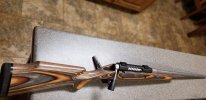 20220515_222722.jpg1.1 MB · Views: 349
20220515_222722.jpg1.1 MB · Views: 349 -
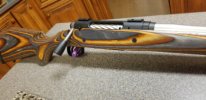 20220515_224832.jpg442.7 KB · Views: 309
20220515_224832.jpg442.7 KB · Views: 309 -
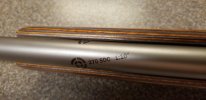 20220515_224850.jpg311.1 KB · Views: 314
20220515_224850.jpg311.1 KB · Views: 314 -
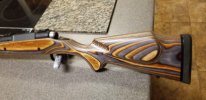 20220515_224914.jpg416.6 KB · Views: 305
20220515_224914.jpg416.6 KB · Views: 305 -
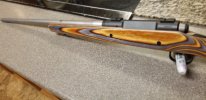 20220515_224921.jpg510.5 KB · Views: 290
20220515_224921.jpg510.5 KB · Views: 290 -
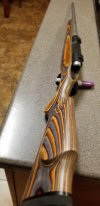 20220515_225019.jpg486.8 KB · Views: 287
20220515_225019.jpg486.8 KB · Views: 287 -
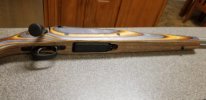 20220515_225122.jpg440.1 KB · Views: 282
20220515_225122.jpg440.1 KB · Views: 282 -
 20220515_225045.jpg448 KB · Views: 286
20220515_225045.jpg448 KB · Views: 286 -
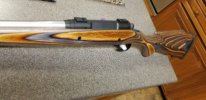 20220515_224948.jpg452.9 KB · Views: 297
20220515_224948.jpg452.9 KB · Views: 297
Last edited:
